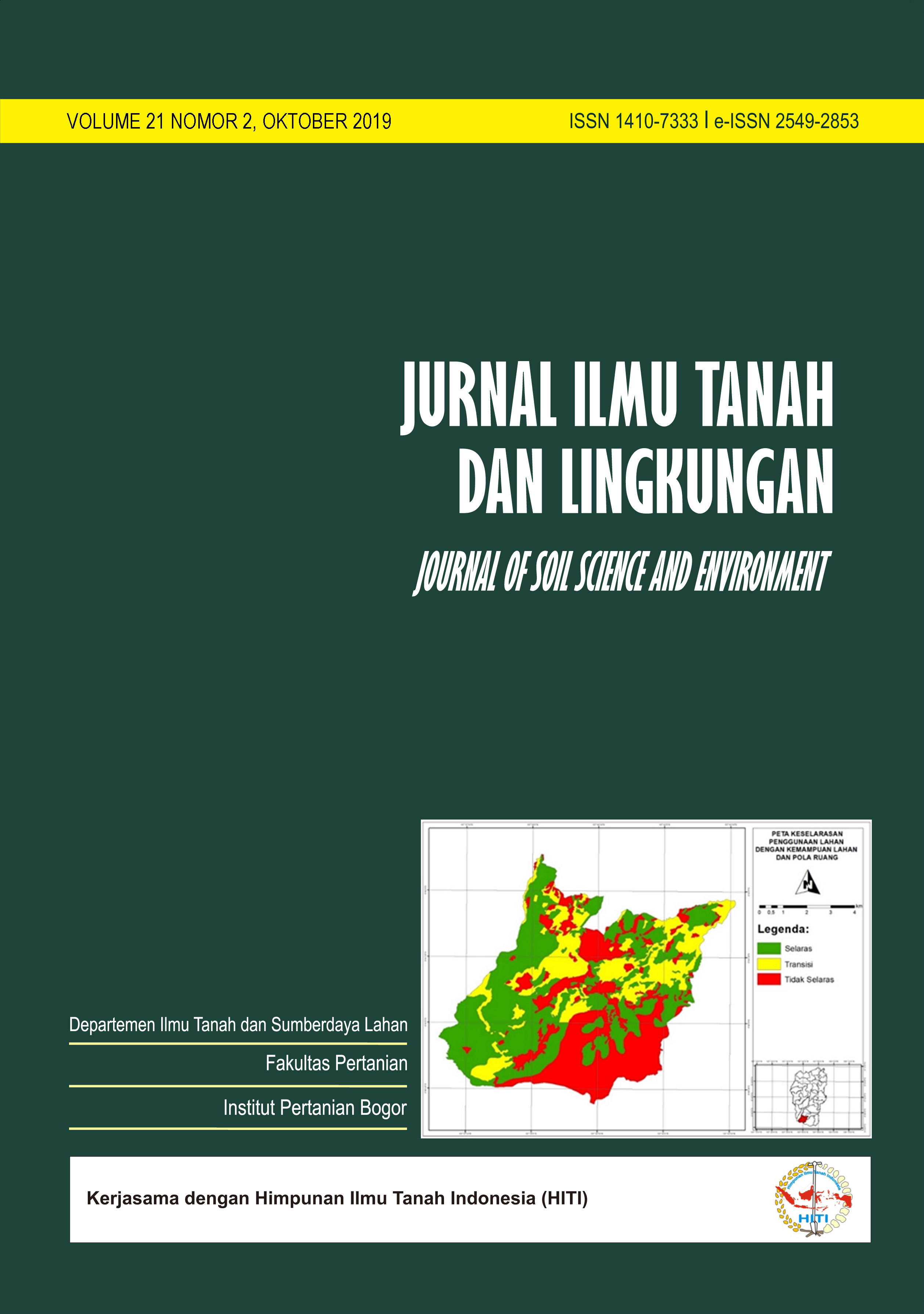Prediction of Rice Yield Based on Nitrogen Input Use Cropsyst Simulation Model in District Mayang
Prediksi Hasil Tanaman Padi berdasarkan Input Nitrogen dengan Simulasi Model Cropsyst di Kecamatan Mayang
Abstract
Rice is the food crop which the highest consumed by the Indonesian population. Rice production in Indonesia can not meet the needs of its inhabitants so that the import still be the primary solution. Jember Regency is one of the regencies rice producers. It has quite a lot of varieties that are planted to obtain the high productivity, especially in the District Mayang, but not all ground conditions and land management will get optimal rice production because the land conditions are different. The Nitrogen (N) elements are the macronutrients which are very important in supporting the growth and development of rice plants. Excess and deficiency of N affect the level of efficiency and production yield of rice plants. The development of rice cultivation in Jember, especially the District Mayang needs to include the simulation results of rice production based on N fertilization and soil conditions so it can be seen the potential of land to develop rice and can be used as a reference for the recommendation of N fertilizer. Cropsyst is a computer program that serves to analyze productivity based on the condition and management of land. Input soil data, climate/location, land management calibrated with plant growth as well as performed validation. The simulation was conducted on 10 farmers of the sample and 6 farmers comparison. The simulation results show that Cropsyst can be used the simulation of rice-based on the input of nitrogen in District Mayang because it produces a value of EF of 0.93 and RMSE of -47.97. Any addition of fertilizer by the farmers of the sample will increase the yield of rice. Mr. Leha is not recommended to add N because the response of the rice plant had reached 100%. To reach the optimal and efficient rice yield then the farmers must provide N fertilizer in accordance with the needs of the plant, i.e., when the response of the plant reaches 90% of maximum.
Downloads
References
Jalota, S.K., G.B. Singh., A. Sood dan S. Panigrahy. 2006. Performance of Cropsyst Model in Rice-Wheat Cropping System. Agric. Physics, 6(1):1-13.
O’Sullivan, J.N., C.J.Asher dan F.P.C.Blamey. 1997. Nutrient Disorders of Sweet Potato. ACIAR Monograph No. 48, Australian Centre for International Agricultural Research, 136 p. Canberra.
Peck, L.L., K E. Webb dan D.M. Bailey. 2004. Extreme sensitivity of biological function to temperaturein Antarctic marine species. Functional Ecology, 18:625-630.
[PDSIP] Pusat Data dan Sistem Informasi Pertanian. 2015. Outlook Komoditas Pertanian Tanaman Pangan (Padi). Kementerian Pertanian. PDSIP, Jakarta.
Rahmatika, W. 2010. Pertumbuhan Padi (Oryza sativa.L) Akibat Pengaruh Presentase N (Azolla dan Urea). Primordia, 6(2):84-88.
Soplanit, R dan S.H. Nukuhaly. 2012. Pengaruh Pengelolaan Hara NPK Terhadap Ketersedaan N dan Hasil Tanaman Padi Sawah (Oryza sativa L.) di Desa Waelo Kecamatan Waepo Kabupaten Buru. Agrologia, 1(1):81-90.
Stockle, C.O., M. Donatelli dan R. Nelson. 2003. Cropsyst, a Cropping Systems Simulation Model. European Agronomi, 18:298-307.
Tisdale, S.L. and W.L. Nelson. 1975. Soil Fertility and Fertilizers. Macmillan Publishing Co., New York.
Van der Ploeg, R.R., W. Bohn dan M.B. Kirkhan. 1999. On the Origin of the Theory of Mineral Nutrition of Plants and the Law of the Minimum. Soil Science Soc. Am. J., 63:1055-1062.
Department of Soil Science and Land Resources Departemen Ilmu Tanah dan Sumberdaya Lahan, Faculty of Agriculture Fakultas Pertanian, IPB University



















